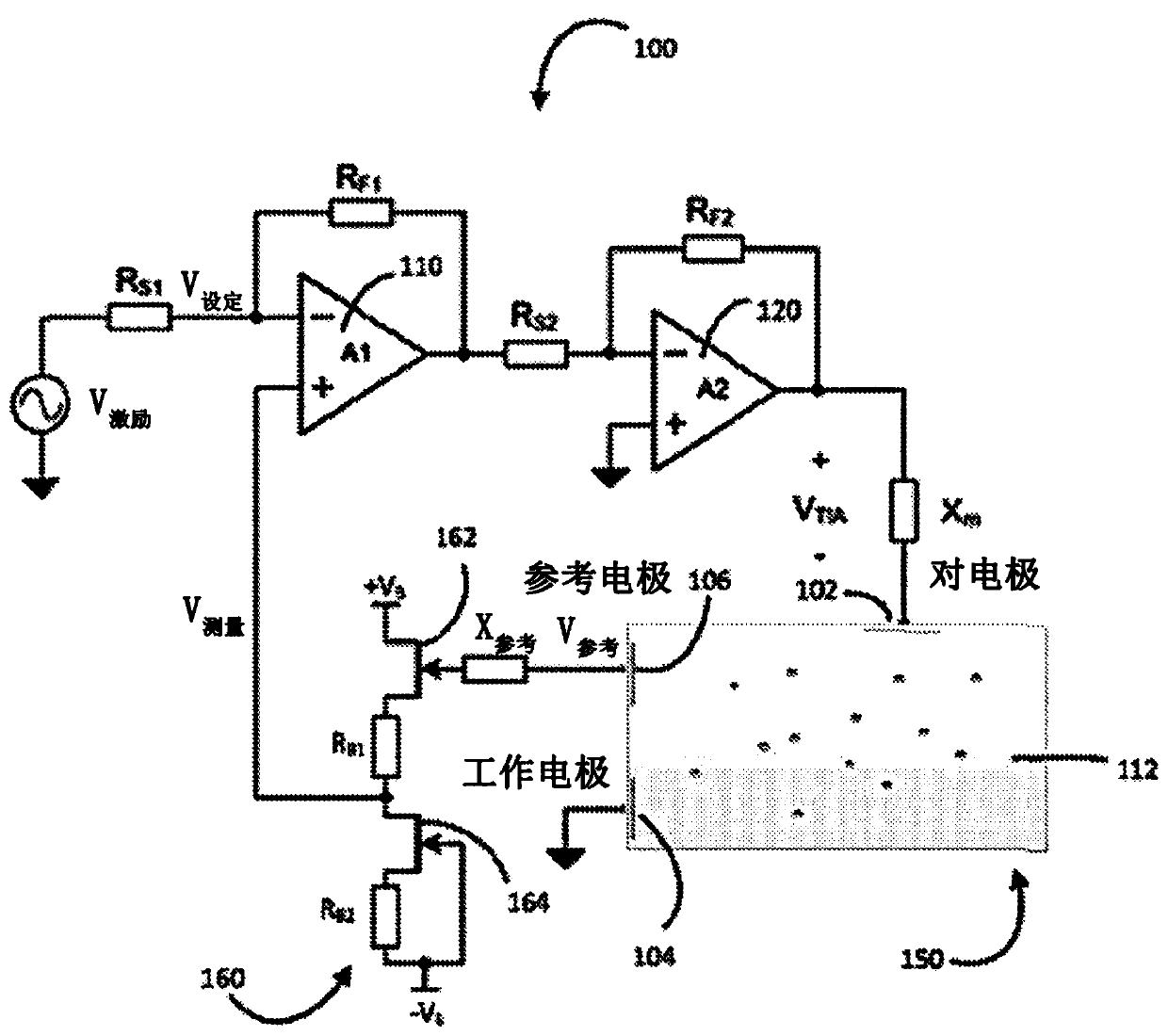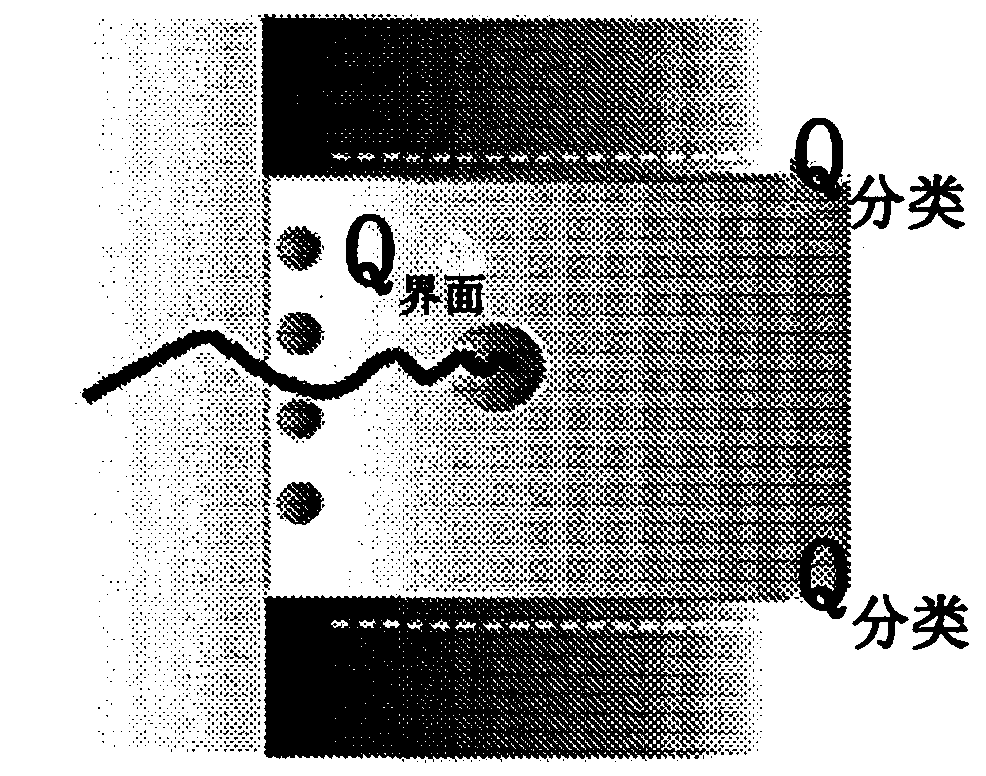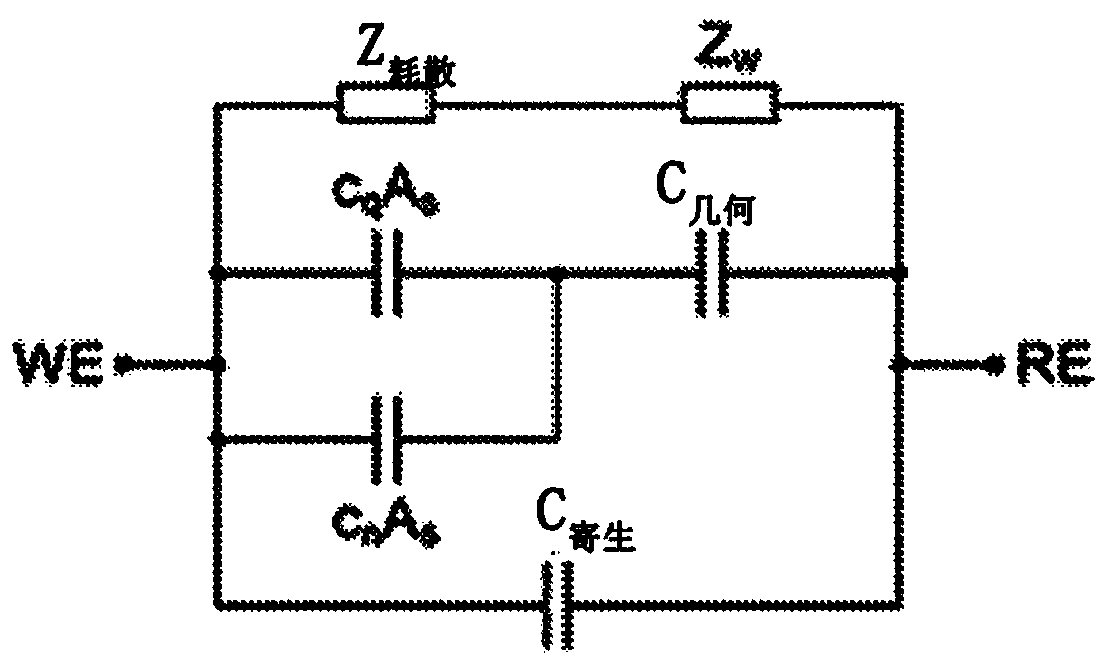Nanoscale electrochemical interface for detection of analytes
An electrochemical and analyte technology, applied in the field of nanoscale electrochemical interfaces for detecting analytes, can solve the problems of inability to selectively detect quantum properties of physical systems and limited ability to detect quantum properties.
- Summary
- Abstract
- Description
- Claims
- Application Information
AI Technical Summary
Problems solved by technology
Method used
Image
Examples
Embodiment 1
[0156] For the fabrication of the sensor interface structure, a rapid prototyping method has been considered so that the tests on the I–V characteristics of the interface can be done quickly to verify the theoretical results presented in the previous section. A platinum(0.8)-iridium(0.2) wire with a diameter of 0.25 mm (Nanoscience Instruments Inc., Alexandria, Virginia) was cut into 2 cm long pieces and added in standard SC-1 solution ( 100ml deionized water: 10ml H 2 o 2 : 1ml NH 4OH) cleaning. The cleaned wire segments can then be installed in custom holders on the Z-table. The station can lower short lengths of wire into an electrochemical etch bath consisting of 35 g of sodium chloride (Sigma Aldrich, St. Louis, MO) in 200 ml of deionized water. 2.9 ml of perchloric acid (Sigma-Aldrich, St. Louis, MO) was also immersed in the etchant bath in the middle of the annular copper counter electrode. When the wire is immersed in the bath by lowering the Z-table, an AC wavefo...
Embodiment 2
[0160] The current-voltage traces of nanoelectrochemical interfaces fabricated to the above specifications were obtained by applying a swept low-voltage noise bias between the interface and the Ag / AgCl reference electrode, and the current generated across the counter electrode-electrolyte interface was passed through the low-noise The transimpedance amplifier chain is measured as the voltage drop across a series resistor at the opposite electrode node. A custom low voltage noise potentiostat described in the previous section was used for signal application and current measurement. For cyclic voltammetry experiments, the bias voltage was cycled between ±0.3 V at a scan rate well below the maximum limit dictated by the characteristic time scale of the integrated electrochemical interface instrumentation system. For all nanoscale electrochemical interfaces described in this paper, the limiting capacitance of the integrated system used to determine the maximum scan rate was relate...
Embodiment 3
[0162] The typical I-V characteristics of a quantum electrochemical interface are in Figure 7A Shown in , for an interfacial region of 50 nm, functionalization by a monolayer nanoparticle monolayer sandwich consisting of sequentially self-constituting 1,2-ethanedisulfide on an exposed 80–20 platinum-iridium substrate Alcohol, 10 nm gold nanoparticles and 1-mercapto-3-propionic acid. The electrolyte contained 100 mM potassium monohydrogen phosphate and potassium dihydrogen phosphate in a ratio that set the pH of the electrolyte to 7.5. The electrolyte also contained the potassium hexacyano (II and III) ferrate redox couple at a concentration of 1 mM. Arrows indicate the acquired current traces for forward (-0.3 V to 0.3 V) and reverse (0.3 V to -0.3 V) scans at a scan rate of 1 mV / min. The current measured at each 1mV voltage increment is the average of a thousand acquisition data points sampled at 30-second intervals, with a 30-second delay set before acquisition to allow t...
PUM
 Login to View More
Login to View More Abstract
Description
Claims
Application Information
 Login to View More
Login to View More - R&D
- Intellectual Property
- Life Sciences
- Materials
- Tech Scout
- Unparalleled Data Quality
- Higher Quality Content
- 60% Fewer Hallucinations
Browse by: Latest US Patents, China's latest patents, Technical Efficacy Thesaurus, Application Domain, Technology Topic, Popular Technical Reports.
© 2025 PatSnap. All rights reserved.Legal|Privacy policy|Modern Slavery Act Transparency Statement|Sitemap|About US| Contact US: help@patsnap.com



